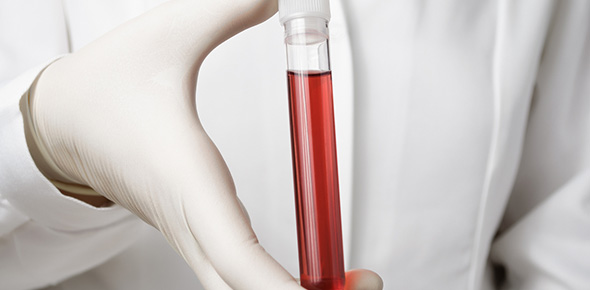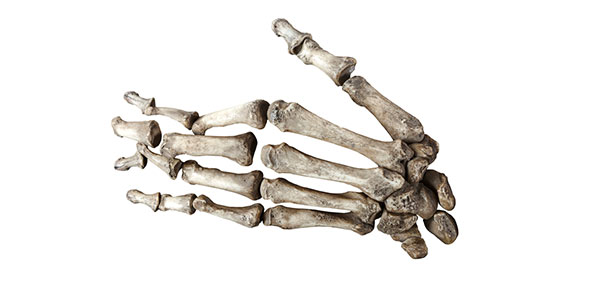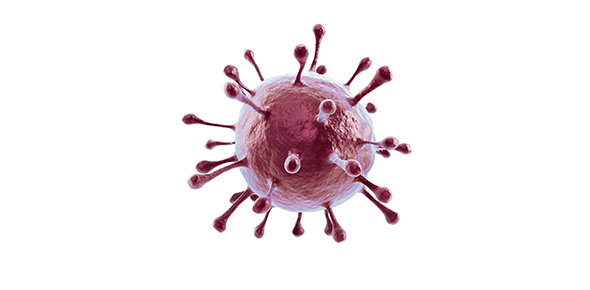Related Flashcards
Related Topics
Cards In This Set
| Front | Back |
|
A patient presents with both acute and chronic infections and a total WBC count at 1,000/µL, with an especially low neutrophil count. Patient currently taking chemotherapeutic medication. What is your diagnosis?
|
Agranulocytosis
treat with antibiotics and adjustment of chemo meds |
|
A patient presents with fever, malaise, and oral ulcerations. A dental exam shows loss of bone around the teeth. At time of visit, lab tests show a WBC count at 3,000/µL, but a week later, it is back to normal. What is your diagnosis?
|
Cyclic Neutropenia
treatment is unknown since cause is unknown |
|
A patient presents with a WBC count higher than 10,000/µL, with an especially high neutrophil count. She has both malaise and fever, and is suffering from an infection caused by pyogenic bacteria. What is your diagnosis?
|
Bacterial Leukocytosis
treat with antibiotics |
|
A patient presents with a WBC count higher than 10,000/µL, with an especially high monocyte and lymphocyte count. He shows signs of an acute viral infection. What is your diagnosis?
|
Virus-associated Leukocytosis
|
|
A patient presents with fever, weakness, malaise, and a prominent lymphadenopathy in the cervical and inguinal groups. Laboratory findings show leukocytosis of 15,000 to 20,000/µL lymphocytes and monocytes. At first look, the lymphocytes appear malignant. A rapid lab test shows the presence of the Epstein Barr virus. The patient noted she "probably has whatever her boyfriend has." What is your diagnosis?
|
Infectious Mononucleosis
treat with pain meds, steroids, antiviral meds, and bed rest |
|
A patient presents with fever, malaise, a slight anemia, and a WBC count at 100,000/µL. A lab smear shows circulating malignant lymphocytes. This condition recently developed, and is rapidly progressive. What is your diagnosis?
|
Acute Lymphocytic Leukemia
treat with chemotherapy and radiation - responds well. |
|
A patient presents with fever, malaise, a slight anemia, and a WBC count at 100,000/µL. A lab smear shows malignant granulocytes (neutrophils or monocytes). This condition recently developed, and is rapidly progressive. What is your diagnosis?
|
Acute Mylogenous Leukemia
treat with chemotherapy and radiation - poor response, often fatal. |
|
A patient presents with fever, malaise, a slight anemia, and a WBC count at 100,000/µL. This condition has been progressing over time. A lab smear shows malignant lymphocytes. What is your diagnosis?
|
Chronic Lymphocytic Leukemia
treat with chemotherapy and radiation - responds well. |
|
A patient presents with fever, malaise, a slight anemia, and a WBC count at 100,000/µL. This condition has been progressing over time. A lab smear shows malignant granulocytes (neutrophils or monocytes) and genetic testing reveals the presence of the "Philadelphia Chromosome." What is your diagnosis?
|
Chronic Myelogenous Leukemia
treat with chemotherapy and radiation - poor response, often fatal. |
|
A patient presents with massive lymphadenopathy, present in the cervical, axillary, and inguinal groups. Lymph nodes are firm to palpation. A lab smear shows the presence of multinucleated, "owl eye" cells (Reed Sternberg cells). No malignant cells are found in circulation. What is your diagnosis?
|
Hodgkin Lymphoma
treat with chemotherapy and radiation. measured in stages 1-4, 4 being most severe and worst prognosis. |
|
A patient presents with enlarged axillary and inguinal lymph nodes, low grade fever, and night sweats. She has jad a rubbery, painless lymph node for about a month. A lab smear shows malignant lymphocytes which are not circulating. What is your diagnosis?
|
Non-Hodgkin Lymphoma
treat with chemotherapy and radiation - prognosis usually bad, but better response recently. |
|
A patient presents with multiple rapidly growing oral tumors. Histologically, a sea of lymphocytes in a starry sky pattern are seen in the lymph nodes. Epstein Barr virus is found to be present. What is your diagnosis?
|
Burkitt Lymphoma
treat with chemotherapy and radiation. African BL has a good prognosis, while Non-African does not. (50% 5 yr) |
|
Leukopenia
|
White blood cell count less than 6,000/µL
|
|
Leukocytosis
|
White blood cell count above 10,000/µL
|
|
A patient presents with oral and skin petechiae and facial redness. Her platelet count is low (less than 200,000/µL), and there is an increased bleeding time because of this. The patient was recently using aspirin and antibiotics. What is your diagnosis?
|
Thrombocytopenia
treat with platelet infusions, splenectomy (if spleen is causing the problem), and steroids |








